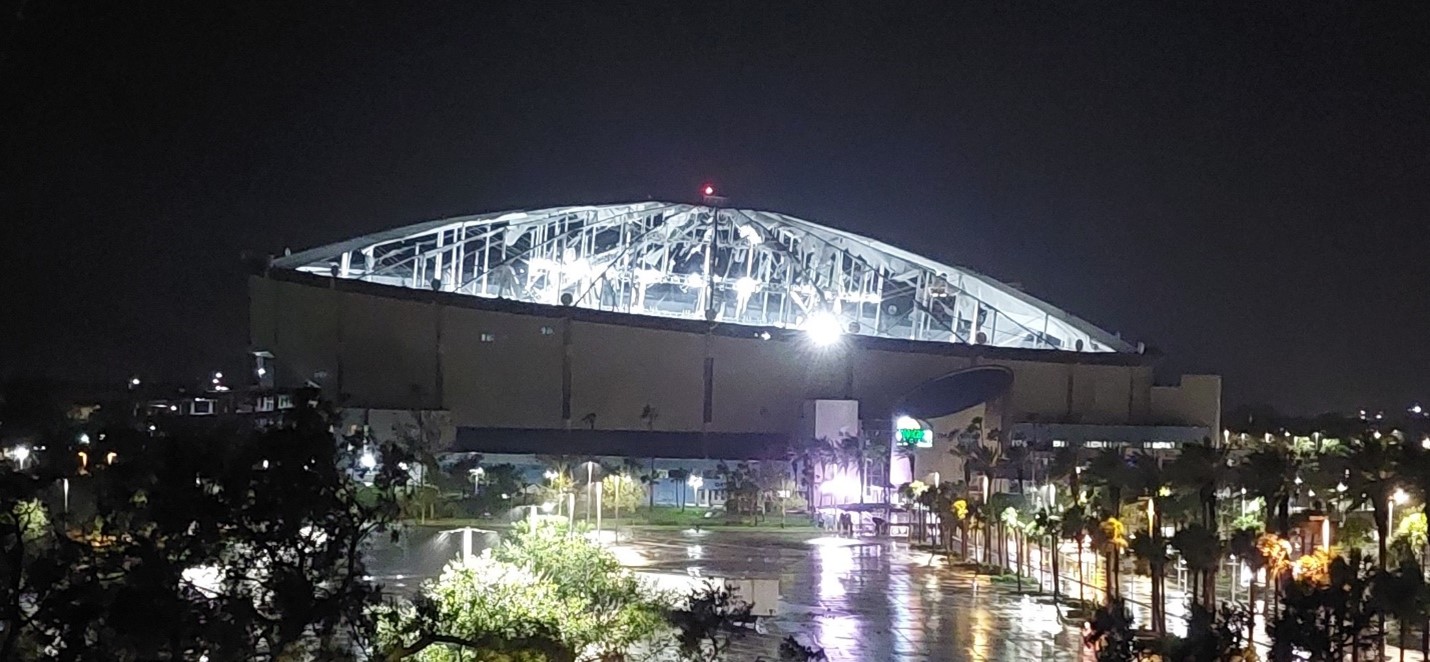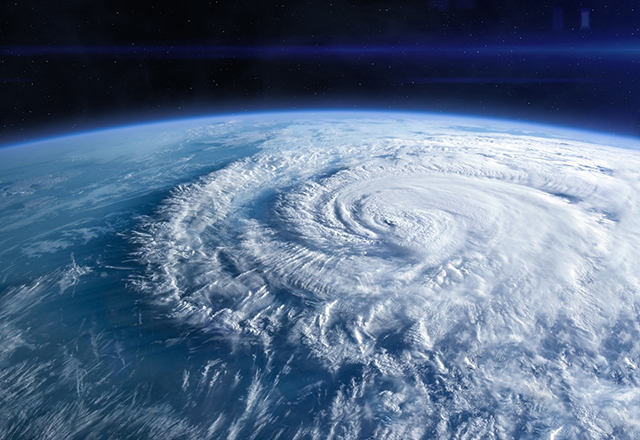Last May, the National Oceanic and Atmospheric Administration (NOAA) published a notice predicting an increase in the number of hurricanes in the Atlantic for the 2024 hurricane season [1]. This increase was related to a La Nina weather event, in which wind and moisture conditions change in the Atlantic, increasing the possibility of hurricane formation in the Atlantic Ocean, while decreasing it in the Pacific Ocean [2].

Source: climate.gov/media/16133
However, this prediction is not 100% accurate, and does not imply the absence of hurricanes in the Pacific Ocean, as was shown by the disaster suffered by Mexican cities on the Pacific Coast due to Hurricane John [3].
In the Tampa Bay area, we had three storms land close to us over the past year. These hurricanes, named Debby, Helene and Milton, not only affected the activity of the postdoctoral community at Johns Hopkins All Children’s Hospital in St. Petersburg, but also the lives of postdocs all around Florida. The postdoc community has learned to live and work in the summer while watching the Atlantic and NOAA’s reports regarding storm and hurricane tracks. Sometimes, the work can continue without any disturbance, as happened with Hurricane Debby in August, which just sent some rain into downtown St. Petersburg. However, when major hurricanes strike on Florida’s west coast, we need to adapt. This is even worse when the storms come in tandem, as happened with hurricanes Helene and Milton.
After NOAA confirms a major hurricane is coming into Tampa Bay, the hospital notifies the postdoc community, and each laboratory prepares to pause work during the days the facility will remain closed. However, the postdoc community has to decide whether to evacuate inland or stay home and hold through the storm.
The decision depends on where in the city your home is located. Some postdocs are close to the hospital and outside the evacuation zones. This gives them flexibility regarding what to do, and the fellows can decide if they want to stay in the city. In my case, I was located close to Tropicana Stadium, and my building was inside the energy grid of the stadium and the hospitals downtown. Thanks to this location, I knew I would most likely not have energy or flooding problems. However, many postdocs are not so fortunate, and live inside evacuation zones. This is a complicated situation; each postdoc needs to find a place to go before the storm arrives. A fraction of the postdocs going through this are fortunate and can flee with friends out of state for some days far to the north. Others don’t have this opportunity, and need to book hotels close to Orlando. Another part of the population, despite the danger, doesn’t have the option of moving out and decides to stay at home and brave the storm.
As complicated as it can be, this kind of event adds expenses to the postdoc community that affect the decisions of many postdocs who need to balance their financial stability and their safety. Massive evacuations can increase flight tickets from $70 to $1,500 in a single afternoon. In addition, if you decide to drive, you may run into the issue of empty gas stations along the route — and at the end, you still wonder if you will find your home when you come back.
After the storm is gone, returning to your normal life also depends on different events. Do you have energy at home? Water service? Are the gas stations working again? How is the supply in the grocery stores? During the days after Milton, St. Petersburg closed its sewer plants in most of the city, and we were under a boiling water notice. Gasoline was dispensed from trucks in specific places for an entire month, as gas stations were still empty. This situation requires special attention from postdocs, especially if you have family or pets.
Adding storms to the equation of doing a postdoc does not nullify any happiness and success you feel when doing science, but it brings light to the fact that not everything is pipetting and beaches in the Sunshine State.

The image shows Tropicana Stadium without any ceiling after Hurricane Milton left Tampa Bay on Oct. 10, 2024, at 2:20 a.m. Image source: Marcos E Jaso-Vera
References:
- NOAA (May 2024), NOAA predicts above-normal 2024 Atlantic hurricane season, Accessed on 10/15/24. Available at: https://www.noaa.gov/news-release/noaa-predicts-above-normal-2024-atlantic-hurricane-season
- Bell, G. (May 2014), Impacts of El Niño and La Niña on the hurricane season, Accessed on 10/15/24. Available at: https://www.climate.gov/news-features/blogs/enso/impacts-el-nino-and-la-nina-hurricane-season
- Morland, S. (September 2024), At least 22 reported dead as storm John dissipates over Mexico, Accessed on 10/15/24. Available at: https://www.msn.com/en-us/weather/topstories/at-least-22-reported-dead-as-storm-john-dissipates-over-mexico/ar-AA1rq64p?ocid=BingNewsVerp
Related Content
- In Hot Water: Health Implications of Extreme Heat
- Heads I Win, Tails You Lose: Waterborne Disease and Climate Change
- The First RNA Biology and Therapeutics Trainee Retreat at JHU in Florida
Want to read more from the Johns Hopkins School of Medicine? Subscribe to the Biomedical Odyssey blog and receive new posts directly in your inbox.
